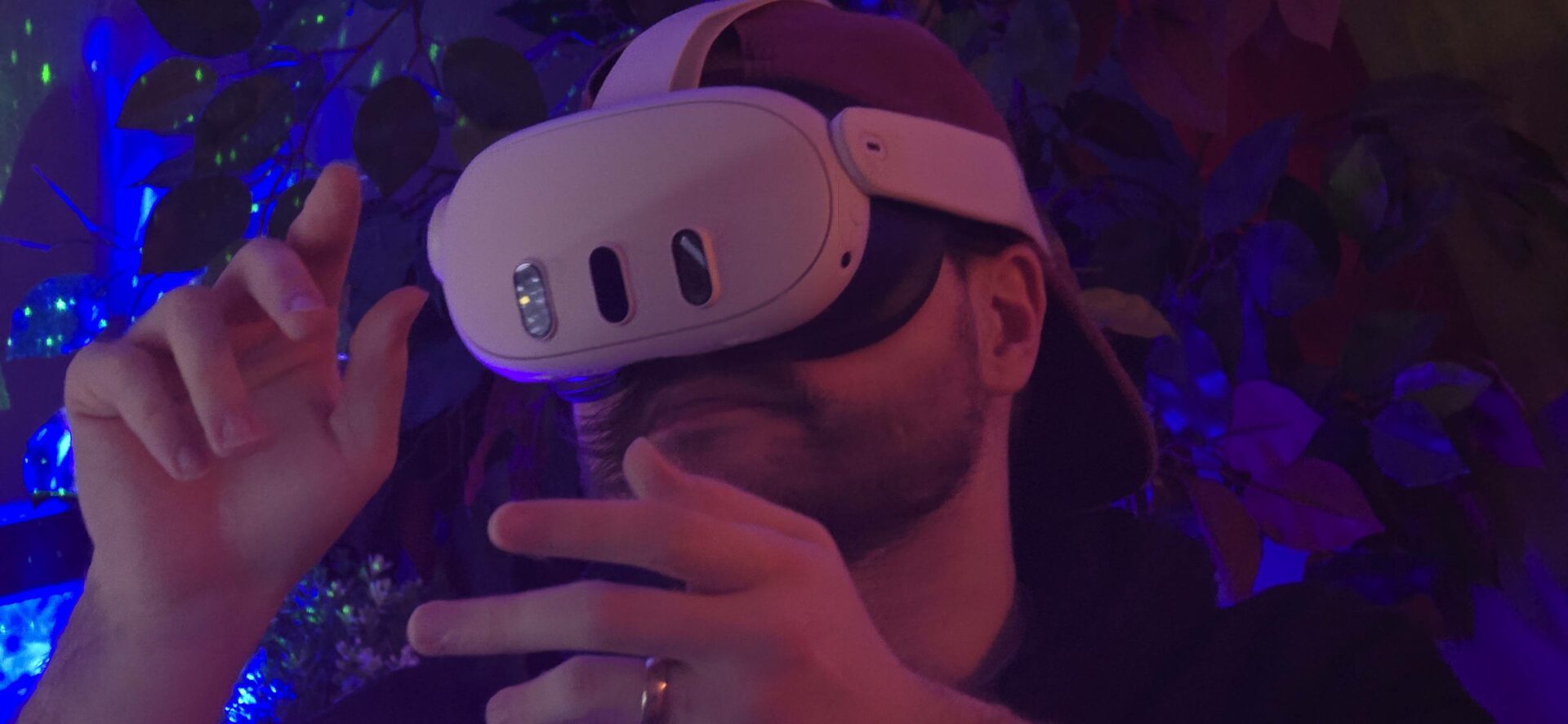We recently connected with Jordan McGraw and have shared our conversation below.
Jordan, so great to have you sharing your thoughts and wisdom with our readers and so let’s jump right into one of our favorite topics – empathy. We think a lack of empathy is at the heart of so many issues the world is struggling with and so our hope is to contribute to an environment that fosters the development of empathy. Along those lines, we’d love to hear your thoughts around where your empathy comes from?
I believe everyone has the capacity to develop empathy. In the most traditional sense, a game designer’s job is to cultivate and refine it. A good designer must understand and anticipate the feelings, expectations, and motivations of their players. Like any skill, developing empathy takes deliberate practice.
I often describe a game designer’s role as a curious confluence—a balance between structured constraints and intuitive understanding. After all, it’s the rules and constraints that define the shape of a game. Without rules, a game is simply unstructured play.
Game designers make progress by observing how players naturally interact with their systems. Playtesting is a unique experience, capable of being both deeply rewarding and immensely frustrating. As a certain famous field marshal might have put it, no design survives first contact with the user. When designs are well understood, their benefits seem self-evident. But more often than not, we must confront the “curse of knowledge”—the cognitive bias of assuming others share our understanding.
During playtests, it’s tempting to guide players through every misstep, especially when they explicitly ask for help. However, intervening too much only reinforces what you already know, preventing you from truly observing how players interact with your design. This applies to any field where users interface with a system, but game design, in particular, benefits from a hands-off approach—unempathetic as that may sound.
It can be uncomfortable to watch players struggle with something you thought was self-explanatory. I’ve recognized this discomfort in myself many times. But rather than a flaw, this discomfort signals an opportunity for reaching deeper empathy. It’s never productive to attribute a player’s difficulty to sheer inability—even if they insist that the fault lies with them. There’s always a meaningful solution to be found. Thinking about problems in context and at a local scale is what leads to elegant design solutions. As developers, it’s our role to observe these encounters and integrate them into a broader understanding for future players.
This hands-off philosophy may seem rigid, but it acknowledges a simple truth: when the time comes, you won’t be there to guide every player. The longer you practice this approach, the stronger your designs become—and the less often you’ll need to employ it.
Engaging in frequent playtests, interacting with diverse players, and remaining open to feedback has helped me cultivate empathy over the years. We all approach games in our own unique ways, but often we do so seeking a common shared experience. Embracing this paradox allows us to better understand the challenges players face and refine our work accordingly.

Let’s take a small detour – maybe you can share a bit about yourself before we dive back into some of the other questions we had for you?
I’m Jordan McGraw, the founder and owner of McGraw Game Shop—a software company focused on game development and emerging technologies. I’ve always been drawn to the intersection of creativity and innovation, and this field continues to be an exciting space to explore. Technology is constantly evolving, and staying curious and forward-thinking has allowed me to work on projects that span virtual reality, education, training, gaming, and scientific visualization.
Over the years, I’ve developed VR applications that explore scales from atomic to astronomical, and each project brings its own set of challenges and design opportunities. One of my proudest accomplishments is Rogue Ascent VR, a first-person shooter that became the first of its kind to feature full hand-tracking controls—allowing players to interact without a controller. That kind of creative freedom, both for the player and the designer, is what makes the work so rewarding.
Right now, I’m celebrating a big milestone: my studio’s 10th year anniversary. To mark the occasion, I’ve been working on something a little different— a full-featured, mouse-and-keyboard PC game that will be released completely for free. While it’s a bit of a departure from my recent VR work, it also feels like an appropriate homecoming. When I started out, all of my games were free. I just wanted to share what I was learning with others, and that spirit is still a big part of what drives me.
One of the best parts of this new project is the opportunity to make something that anyone can access and enjoy—no special hardware required. And in the spirit of giving back, I’ve decided to use this release as a platform to highlight a handful of charities that mean a lot to me. If players enjoy the game and want to show support, I’ll be encouraging them to consider donating to one of those featured causes.
More information about the game, the featured charities, and everything else I’m working on can be found on my studio website: https://www.mcgrawgameshop.com/home.

There is so much advice out there about all the different skills and qualities folks need to develop in order to succeed in today’s highly competitive environment and often it can feel overwhelming. So, if we had to break it down to just the three that matter most, which three skills or qualities would you focus on?
Vision, persistence, and delimitation.
From the start, I’ve often had a clear picture in my mind of what I want to create. That clarity of vision helps me stay anchored, even as I allow room for ideas to grow and evolve. I try to remain open to inspiration when it strikes, but I’m always steering toward the core of what I’m trying to communicate. It can be difficult to fully explain a vision with words alone—especially early on—so I’ve learned it’s often more effective to show rather than tell. There’s no shortage of talk in the creative world. What matters is who can make it happen.
Persistence has helped me overcome the many obstacles that inevitably come with doing creative, technical work. Once I’ve set my sights on something, I stay determined to see it through. Building that kind of persistence takes practice—it’s tied closely to self-reliance and self-trust. Everything you need to accomplish your goals is already within you, though it may take some excavation to find it.
The third and perhaps most overlooked skill is delimitation. While most people are familiar with limitations—external or internal constraints—we talk less about the power of delimitations, which are boundaries we choose for ourselves. Delimitations are about defining the scope of a project intentionally. Knowing how to shape your vision through a balance of limitations and delimitations is, in my opinion, one of the most valuable skills you can develop.
Metaphorically speaking, a laser is a terrible tool for lighting up a room, just as a flashlight is a poor tool for cutting steel. Somewhere between those two extremes lies the unique definition of scope your project requires. Finding that balance—contending with it honestly and creatively—is what gives your work form, direction, and momentum.
You can’t create everything. So create something.

As we end our chat, is there a book you can leave people with that’s been meaningful to you and your development?
Without a doubt, ‘The Design of Everyday Things’ by Don Norman. I often talk about the importance of Human Factors in design, which is a field of psychology focused on understanding what people can and cannot be reasonably expected to do.
Psychology isn’t just about dream analysis or navigating mazes. Human Factors, as Norman would agree, is what keeps planes in the sky and what makes operating your dishwasher such an effortless task. ‘The Design of Everyday Things’ is widely regarded as the foundational text on this topic. Its cover features the iconic image of a red teapot, its spout jutting out overtop its handle. This simple yet evocative imagery perfectly encapsulates the book’s tone and message, one which is dense and informative, but incredibly accessible and easy to understand.
One of the most impactful lessons from this book is how poor design often charades as human error. In one chapter, Norman discusses how designs can fail by not considering the range and prevalence of human bias and mistake. It’s a tough, yet important truth: to err is human. It’s essential to design systems that are robust and resilient to those errors. Understanding where, how, and why people make mistakes is crucial to building better systems.
This concept has been especially relevant to me as a game developer, where my role involves anticipating the many ways in which players interact with my systems. Designing a game isn’t like designing a door that either pushes or pulls (though such doors are of particular interest to Norman). Games involve a deliberate element of challenge that must remain both dynamic and compelling. Striking the right balance between challenge and accessibility requires careful thought and attention, and Norman’s insights serve as a refreshing reminder of the ways we can go about designing those solutions.
Contact Info:
- Website: https://www.mcgrawgameshop.com/home
- Linkedin: https://www.linkedin.com/in/jmcgraw94/
- Twitter: https://x.com/McGrawGameShop
- Other: [email protected]




so if you or someone you know deserves recognition please let us know here.




